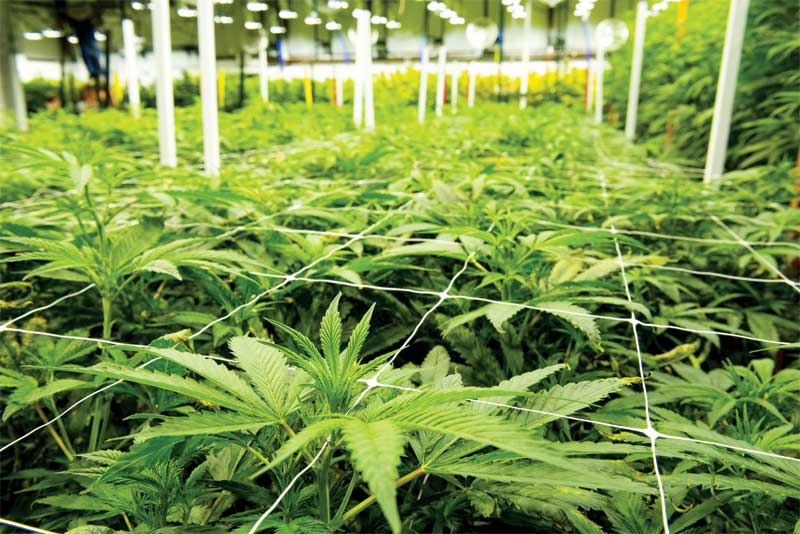The past two decades have witnessed significant increases in worldwide legalization of medical and recreational cannabis use. The global cannabis market size is projected to grow from USD $57 billion in 2023 to USD $444 billion by 2030. This expansion raises an alarming concern: A substantial rise in greenhouse gas emissions.
Cannabis, also known as marijuana, refers to a group of plants whose species include sativa, ruderalis, and indica. It contains a compound called delta-9-tetrahydrocannabinol (THC), which releases dopamine—the pleasure chemical—in the brain, thereby inducing a euphoric, relaxed feeling in individuals upon consumption.
Cannabis has a long history as a medicinal plant, commonly used for pain control, muscle relaxation, nausea management, and weight loss. In addition to cannabis’ clinical significance, people widely consume it for recreational purposes. The popularity of recreational marijuana has skyrocketed in recent years due to widespread legalization and growing social acceptance.
A U.S. survey showed that among current adult users, around a tenth reported using cannabis solely for medical purposes, and nearly half reported using it for both medical and recreational purposes. Driven by the rising consumer demand, cannabis cultivation increased, resulting in a surge in greenhouse gas emissions.
In a recently published paper, Vincent Desaulniers Brousseau, a PhD candidate studying Bioresource Engineering at McGill, and his team investigated these environmental impacts and proposed a potential solution to reduce the industry’s carbon footprint.
Brousseau explained that the traditional method of cultivation of cannabis—outdoor cultivation—has relatively low energy demand.
“We don’t need to use artificial lighting or air conditioning for two to three months of [the cannabis plant’s] lifecycle, which is the main reason why outdoor cannabis cultivation is less energy-intensive,” Brousseau said in an interview with The Tribune.
Fertilizer use is also a concern for eco-conscious farming operations. Cannabis growers often use nitrogen fertilizers to help cannabis flourish, but these fertilizers can emit greenhouse gases, accounting for up to 90 per cent of the crop’s carbon footprint.
In addition to the environmental concerns, there are uncertainties surrounding the quality of the cannabis produced outdoors, which may vary in potency depending on environmental factors, such as sunlight and soil quality.
“[Outdoor-grown] cannabis was found to have more diverse metabolic profiles than those produced indoors, [which can be undesirable because] this is where you need to be standardized to create more homogenous products,” Brousseau said.
On the other hand, indoor cultivation, including greenhouse cultivation, is significantly more carbon-intensive than outdoor cultivation.
“The carbon footprint of indoor production is up to ten times more than that of outdoor production,” Brousseau said.
The high carbon footprint of indoor cannabis cultivation is partially attributed to the electrical use driven by heating, ventilation, and air conditioning (HVAC) systems. These systems control the temperature, humidity, and air purity in an indoor space.
Interestingly, Brousseau’s team found that electrical energy consumption was higher in warmer provinces, such as Ontario and New Brunswick, and was lower in colder provinces, such as Alberta and Yukon. These findings suggest that warmer outdoor temperatures increase the need for air cooling to maintain a suitable indoor temperature for the cannabis to grow.
Another important contributor to energy consumption of indoor cannabis cultivation is horticulture lighting—the use of technology to offer precise control over light conditions, thereby enabling year-round cultivation, faster growth, and higher yields.
Given the environmental consequences of cannabis production, Brousseau emphasizes the need to transition to low-carbon heating technologies, which would likely require governmental financial incentives in order to get off the ground.
Considering the less carbon-intensive nature of outdoor cannabis cultivation, Brousseau advocates for eco-labeling for outdoor-grown cannabis to enhance consumer awareness and empower consumers to make environmentally conscious choices, thereby mitigating the cannabis industry’s carbon footprints.
Brousseau’s next step is to investigate and quantify the carbon footprint of cannabis consumption in Canada. With data on both cannabis cultivation and consumption, researchers can more comprehensively understand the sustainability of the cannabis industry, potentially promoting public policy that aims to reduce energy use and to meet climate goals.









